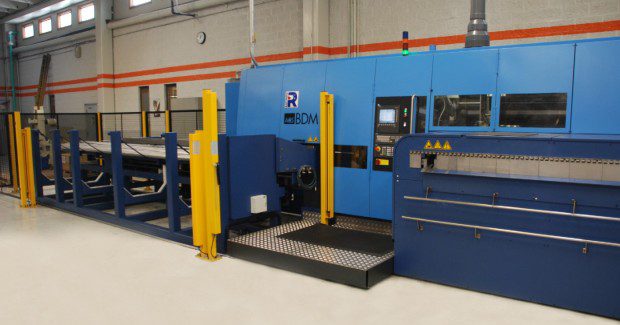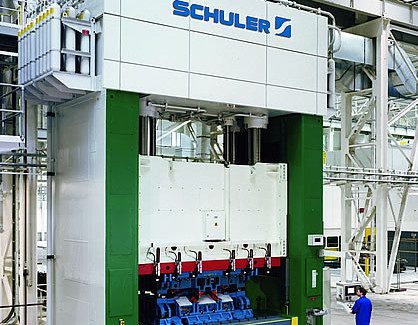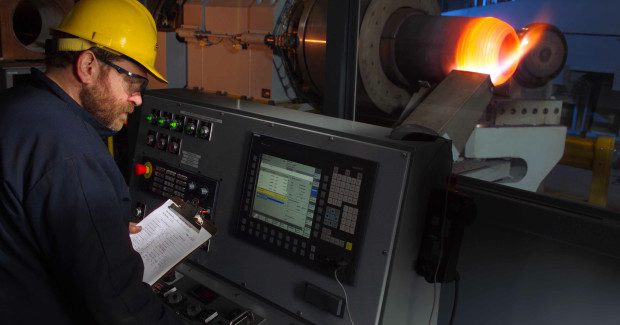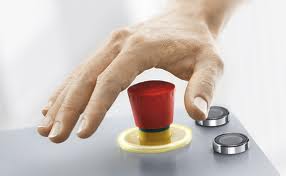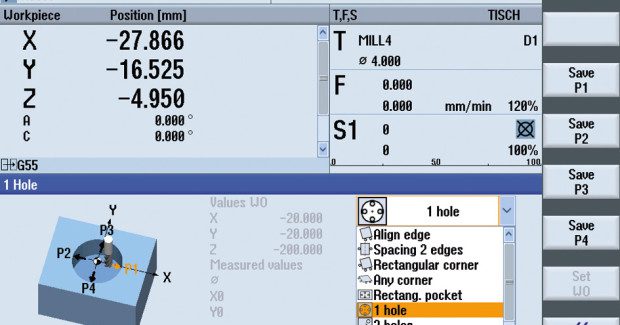CNC Safety . . . Integrated On Your Machines
Nothing is more important than protecting your people, your programs and the machines in your shop . . . and the CNC can help you, in many new ways!
Posted: November 7, 2013
Safety is a paramount concern in all metalworking operations, whether they involve chipcutting, rotating equipment, lasers, gantries, grinding wheels or cutoff circular sawblades. Protection over the years has evolved from the simple machine guard to two-handed operator control stations, E-stops, safety enclosure doors and basic on/off light curtains to today’s highly sensitive motion detection, optical readers and infrared cameras.
The role of the CNC has likewise evolved in the integration of all safety components on these various machine types. All the zones on a machine can now be monitored for collision avoidance, plus the secondary operations and even the packing stations on a full production system can be monitored by the same machine control that runs the cutting or forming program.
Chief among these developments has been the “soft safety” concept, where both electronic and mechanical functions are integrated in the control, requiring a confirmed “fix” of a problem before restart of the machine is made possible.
Concerned about your compliance with valid safety standards and your flexibility for the modernization of machines? Totally Integrated Automation allows individual safety concepts at high availability and reduced effort. The functional safety of machines and systems using Safety Integrate is based on Totally Integrated Automation. This animation presents examples of the realization of safety solutions for various machine tools and other plant systems.
The days when a door switch or even a simple light curtain could be bypassed by an operator to run the machine at a faster production rate are thankfully becoming a distant memory for us. With the integrated safety on the CNC, this careless and dangerous practice is preventable at all shops. The software essentially rechecks all the components on the machine before restarting, as it “thinks” its way through the predetermined builder safety protocols. These become built-in back-ups on all mechanical components and safety interlocks, if the machine is properly configured. Access to these function in the CNC should be limited to designated maintenance or safety personnel.
Onscreen, in a moldmaking operation, for example, the safety function is further addressed. On today’s sophisticated CNC, the G-code functions and all the programmed tolerances for both the cutting program itself and the related motion control can be displayed on a single screen for a better, faster overview by the operator, thereby providing a look-ahead at the work underway. In combination with the advanced surface technology I discussed in last month’s column (Advanced Surface Moldmaking, October 2013), this function further contributes to the overall safe operation of the machine.
In a related safety concern, unscheduled or emergency power loss on a machine will trigger the automatic retraction function on the CNC. All tooling and auxiliary equipment, such as a robot arm, rotary table or transfer mechanism, is put to a rest position outside the cutting, forming or loading theater. Upon restart of power, the CNC interrupt point function will recall the exact program point and, once the problem detected is resolved, the block search function will allow the operator to safely restart the program. This approach is very safe, effective and protecting of the machine, tooling, workpiece, program and, most importantly, the operator.
Future developments in the safety realm are being undertaken presently, including a total approach to 3D collision avoidance between all moving and static parts of a machine or system, even the most complex 5-axis gantry with rotary tables, lasers with articulating robotic arms, tubemaking machinery with integral sawing, drilling and packaging stations requiring multiple CNCs onboard and other highly diverse pieces of metalcutting and metalforming machinery.
Offline simulation of the actual metalworking process as well as some secondary operations is already possible using STL files in a CAM program and the integration of full collision avoidance protocols for all machine and secondary system components or workstations is on the horizon. I’ll be talking more about this in a future column.
On a closing note for this year, I wish you all a Merry Christmas, Happy Holidays and a great (cycle) start to your New Year! Keep on CNCing and see you in 2014. Thanks for reading.






